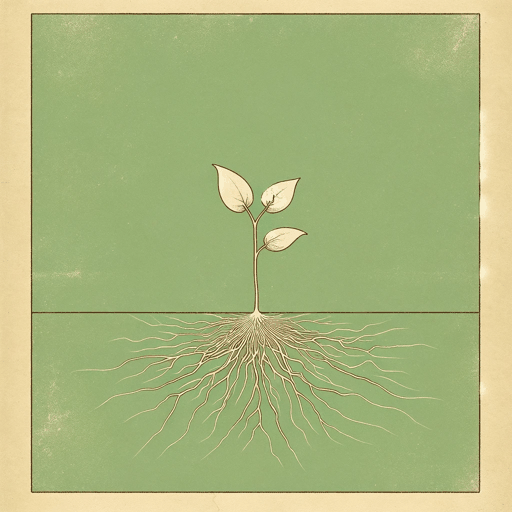49 pages • 1 hour read
Dolly ChughThe Person You Mean to Be: How Good People Fight Bias
Nonfiction | Book | Adult | Published in 2018A modern alternative to SparkNotes and CliffsNotes, SuperSummary offers high-quality Study Guides with detailed chapter summaries and analysis of major themes, characters, and more.
Summary and Study Guide
Overview
The Person You Mean to Be: How Good People Fight Bias is a work of nonfiction by Dolly Chugh, an award-winning social psychologist and management professor at New York University’s Stern School of Business. Interweaving stories and science, Chugh redefines what it means to be a good person, focusing not on the binary categories “good” and “bad” but instead on being “good-ish,” or receptive to learning. Grounded in scholarship, while using accessible language, voice, and examples, Chugh’s book has been widely lauded inside and outside academia, serving as a Common Read selection for incoming students at several universities, as well as featuring in numerous corporate reading clubs, including those at Visa and JP Morgan.
This guide refers to the 2018 edition published by Harper Business, an imprint of HarperCollins Publishers.
Content Warning: The source material addresses racism, sexism, and discrimination against members of the LGBTQ+ community.
Summary
The Person You Mean to Be: How Good People Fight Bias comprises an introduction and four parts each divided into several chapters. In the Introduction, titled “Good-ish People,” Chugh lays the groundwork for the book’s content and structure, combining anecdotes and science to describe her main argument, namely, that being “good-ish” is more realistic and enabling than trying (and failing) to be good all the time. The Introduction also identifies the book’s target audience as believers in social justice, who must activate their growth mindset, see ordinary privilege, opt for willful awareness, and engage with people and systems to become builders of a more equitable society.
Part 1, “Builders Activate a Growth Mindset,” focuses on key themes that run throughout Chugh’s book, notably, The Benefits of Cultivating a Growth Mindset and Embracing Mistakes as a Learning Opportunity to combat implicit bias and privilege. Chugh uses the metaphors of headwinds and tailwinds to explain the concept of privilege. Headwinds are invisible challenges that make life harder for some people, while tailwinds are invisible advantages that help some people advance. Chugh urges believers in social justice to become builders by activating their growth mindset, that is, to see themselves as works-in-progress who are open to learning, even from mistakes. She makes her case by interweaving data and anecdotes, which not only engages readers, but also normalizes mistakes as a normal part of the learning process. Part 1 also addresses The Effects of Implicit Bias on Decision-Making and Behavior by explaining what unconscious bias is, how it functions, and how social scientists measure it. It also explains the meritocracy myth, one of the most pervasive myths in American society.
Part 2, “Builders See and Use Their Ordinary Privilege,” revisits the issue of privilege and merit, focusing on the theme of Debunking the Myth of Meritocracy and Combatting Privilege to Promote Social Justice. With studies and stories, Chugh argues that most people are unaware of their ordinary privilege, which might come from being white, male, straight, or an intersection of these identities. Research shows that most people miss things when they don’t expect to see them, even when they are right in front of them. Such is the case with ordinary privilege, which allows those who have it not to think about how it propels their advancement. Chugh argues that inequality is not a problem women and minorities can solve on their own, but one that requires the participation of those with ordinary privilege.
Part 3, “Builders Opt for Willful Awareness,” is about white racial identity development and otherizing modes of behavior. Interweaving anecdotes and studies, Chugh argues that becoming a builder requires activating a growth mindset to foster willful awareness, a process that often results in sadness, anger, and shame. Rather than turn away from these difficult emotions, builders must overcome self-threat to break out of willful ignorance and opt for willful awareness. Even with good intentions, however, builders will make mistakes as they develop their white racial identities. Chugh reiterates and expands on a theme she introduced in Part 1, namely, that mistakes are a normal part of learning. She flags four modes of behavior to avoid: savior mode, sympathy, tolerance, and typecasting, all of which have otherizing effects.
Part 4, “Builders Engage,” centers on actions builders can take to promote social justice. Using anecdotes and studies, Chugh argues that there are myriad ways of being a builder, offering examples from a range of contexts, including the theater. Stressing the homogeneity of the American media, which is dominated by straight white men, she urges readers to seek out alternative narratives and amplify marginalized voices. Citing the example of the radio soap opera, Musekeweya, which helped quell ethnic violence in Rwanda, Chugh holds that amplifying new narratives can have life and death consequences. She also explains the differences between two related concepts—diversity and inclusion—comparing the former to a gateway and the latter to a pathway. Last, she alerts readers to key aspects of promoting social justice, focusing not only on who needs help but also on how and when to lend support.
Featured Collections
Books on Justice & Injustice
View Collection
Class
View Collection
Class
View Collection
Common Reads: Freshman Year Reading
View Collection
Community
View Collection
Contemporary Books on Social Justice
View Collection
Equality
View Collection
Psychology
View Collection
Self-Help Books
View Collection

